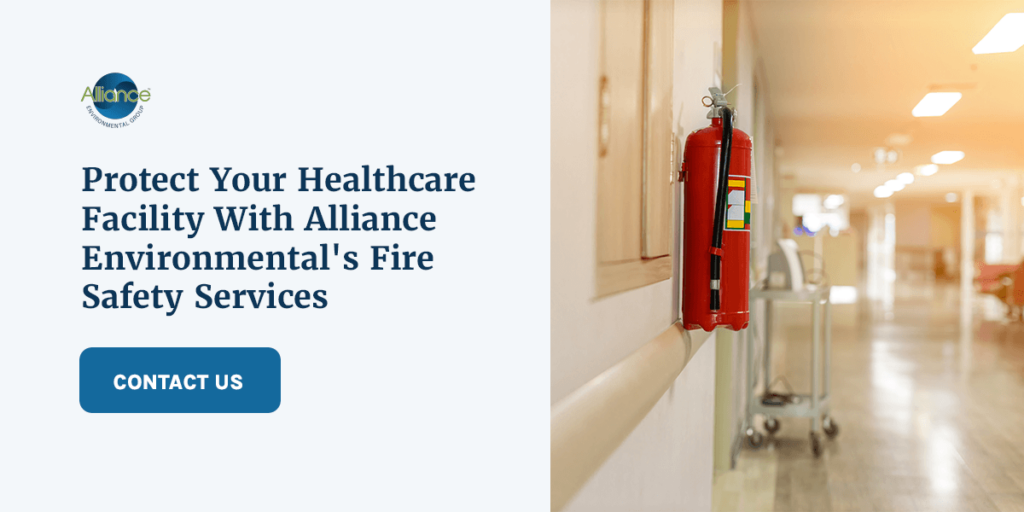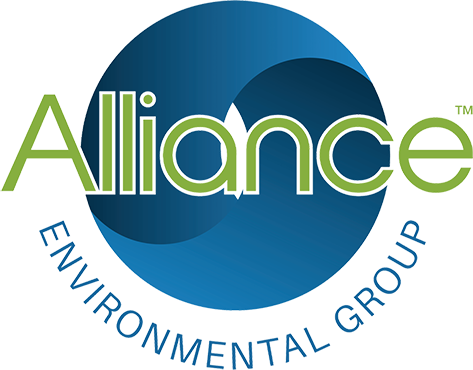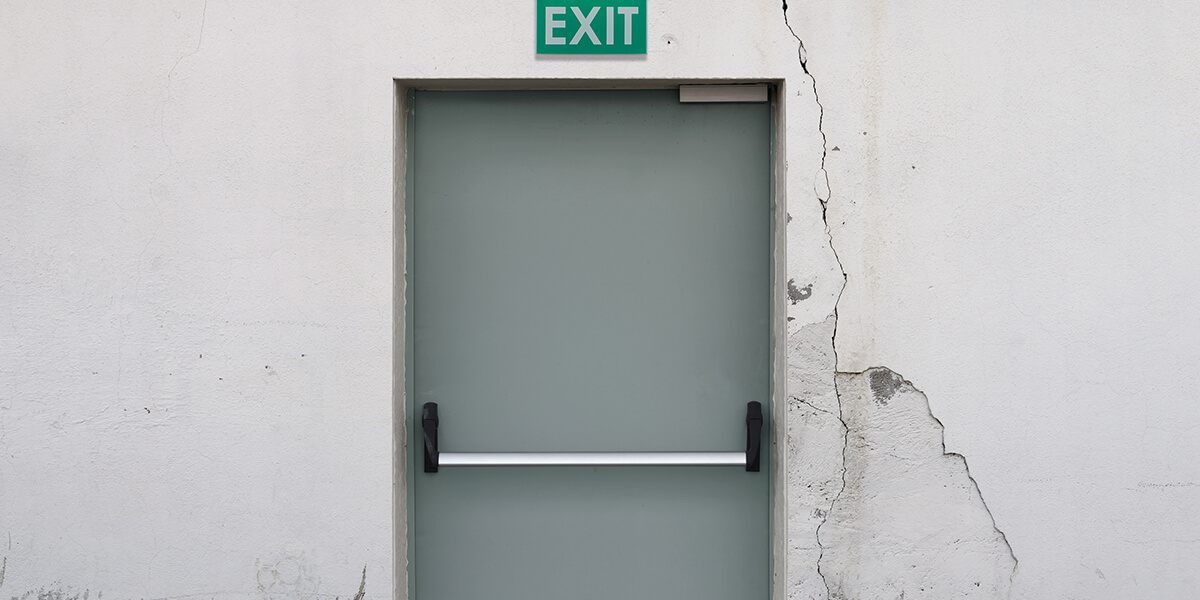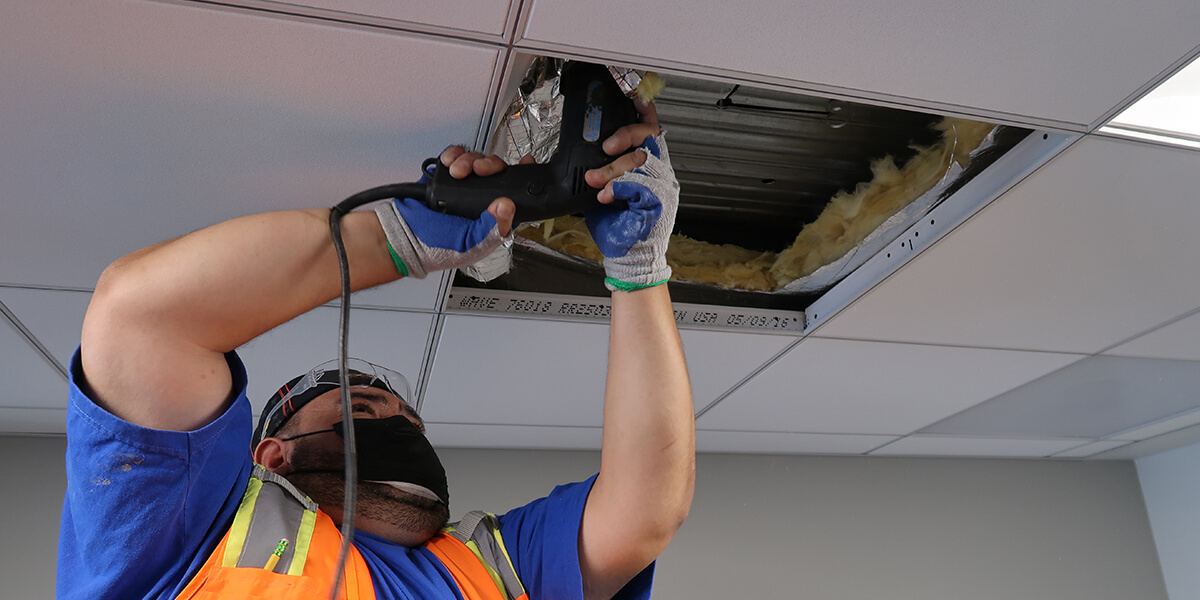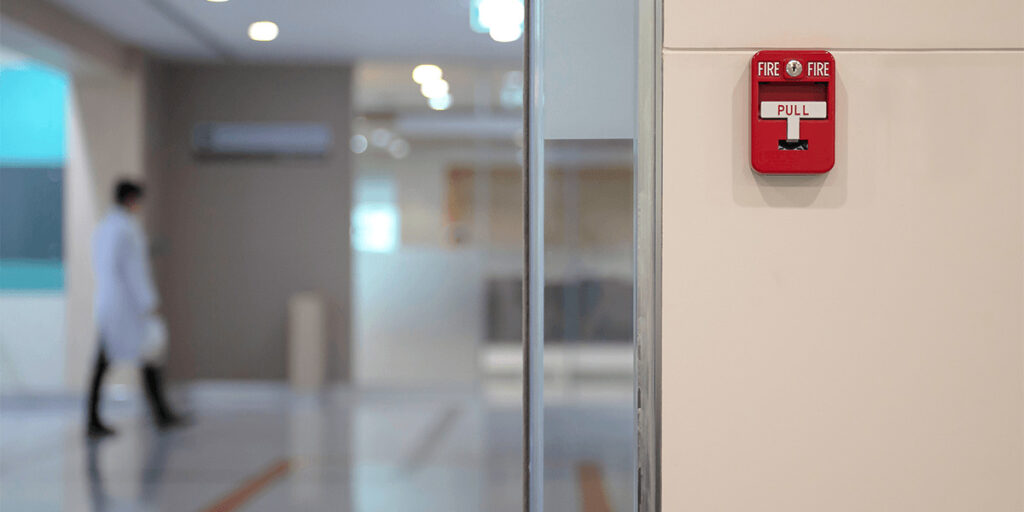
There are many fire safety hazards in healthcare settings that can potentially pose a threat to facility staff, patients and building infrastructures. Fire life safety experts and healthcare administrators must work closely to mitigate the risks of fires.
Below, we explore fire safety and awareness in healthcare facilities, fire safety protocols, various measures to prevent fires in healthcare facilities and the different fire life safety services Alliance Environmental offers to protect your facility.
Fire Life Safety and Awareness in Healthcare Facilities
Fire safety and awareness in healthcare facilities go a long way in attempting to minimize the possibility of experiencing fires firsthand. The National Fire Protection Association plays a pertinent role in conveying relevant information regarding fire and electrical hazards. The organization offers various training and certification programs to equip staff with the necessary tools to combat fires and further promote awareness in the facility.
Part of ensuring fire safety in healthcare facilities is having regular discussions with healthcare administrators, staff and fire safety experts. Fire safety experts can assist facilities in numerous ways, including:
- Keeping staff up to date with current trends and alerts.
- Locating and identifying sprinklers and other detection systems and showing how to use them effectively.
- Ensuring the appropriate use of fire extinguishers through active demonstration.
- Providing emergency contact numbers if the need arises.
- Answering all questions related to the correct processes and procedures to follow in a fire emergency.
- Mapping out emergency exits and routes for staff and patients.
It is the responsibility of healthcare facilities to arrange regular training and group discussions with their local fire departments. This way, staff is always aware of what to do and what not to do when a fire occurs.
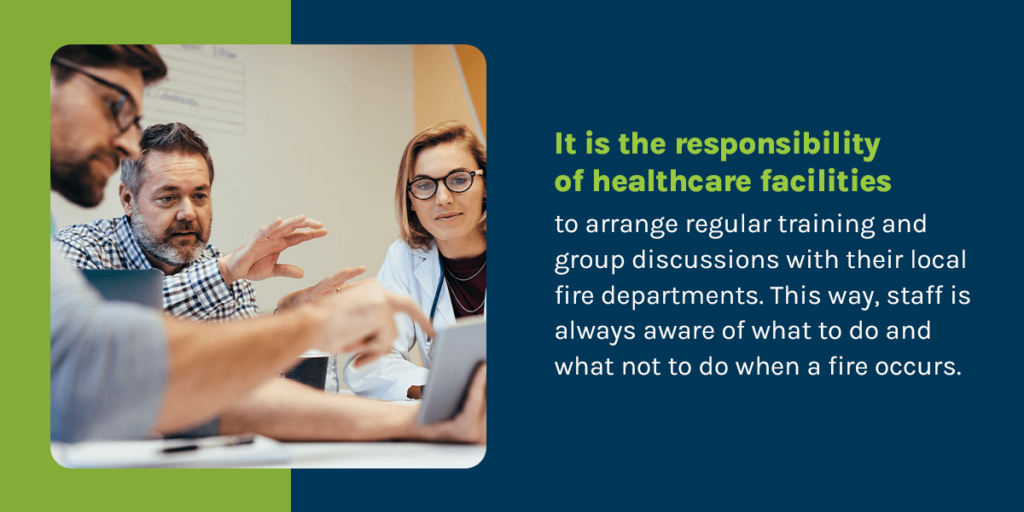
Fire Life Safety Protocols in Hospitals and Assisted Living Facilities
As a general rule, no inexperienced person should ever try to fight a fire that is out of control. However, there are protocols to follow that could facilitate intervention, especially if a fire is smaller and can be controlled by using a fire extinguisher. The main protocols in healthcare facilities that should be followed include:
- Locating the fire and setting off the fire alarm or listening attentively if someone else has set it off.
- Doing a headcount, leading everyone to exit points and immediately assisting anyone in direct danger of being harmed by a fire, provided the fire is not too big.
- Confining the fire to an area by closing it off, thus trapping it without oxygen.
- Correctly using the fire extinguisher to douse small fires that do not pose an immediate threat.
Measures to Prevent Fires in Healthcare Facilities
When healthcare administrators are equipped with the necessary knowledge and tools to assist their staff and patients during an emergency, they are more likely to encounter fewer injuries and fatalities. Structural damage can also be mitigated to an extent.
Specific measures should be put in place to help prevent fires in healthcare facilities. These measures can be implemented in the building through fire equipment and include regular checks and observations. It’s recommended to consult fire safety experts while working on your facility’s fire prevention processes to ensure you’re on the right track.
1. Implement a No Smoking Rule
Ideally, your entire facility and its surrounding property should be smoke-free zones. If you need to allocate an area for staff and patients to smoke cigarettes, be sure to keep it confined and provide suitable methods for individuals to properly dispose of their cigarettes. It may be helpful to have fire safety experts provide information about fire safety awareness and the risks of smoking and fires to help mitigate potential issues.
2. Monitor Kitchen Activity
Kitchens in healthcare facilities pose certain fire risks. This is often due to malfunctioning kitchen equipment and human error. A fire extinguisher must be kept in an accessible location in the kitchen to ensure staff can reach it if necessary.
A basic understanding of electrical equipment and what can be done in case of any issues is important when monitoring kitchen activity, like switching off equipment when not in use and checking outlets for damage. Be sure that staff is well-educated on fire safety in this specific environment, and that kitchen hoods receive regular, professional cleaning to minimize fire risks.
3. Have Fire Doors Maintained and Inspected
Fire doors are an important line of defense that must be inspected and repaired regularly to keep them in optimal working condition. A trusted company that offers fire life safety services can help you install and maintain this kind of equipment to elevate your facility’s safety.
4. Install Smoke Detectors and Fire Dampers
Smoke detectors are your first indication when a fire breaks out, so they should be inspected routinely to ensure they work correctly when you need them to most. Fire dampers help prevent fires from spreading through ductwork, and like smoke detectors, they should be properly maintained to ensure proper function.
5. Store Gas Cylinders Properly
Gas cylinders pose a fire risk because of their flammable contents. Extra care should be taken when handling and storing gas tanks — they should be placed away from any areas or materials that can lead to a fire. The same applies to all combustible materials.
6. Comply With Fire Safety Standards
Your building and property must comply with fire safety regulations. Part of this is having the proper infrastructure to minimize the impact of damage in the event of a fire. Fire dampers, sprinklers and doors all help protect your building and must meet the right certificate and label requirements to pass inspections. Alliance Environmental can assist with inspecting and repairing fire doors to ensure you comply with fire safety standards.
7. Train Some Employees to Be Safety Officers
One beneficial measure you can set in place is having rotational safety officers who know how to check and use fire extinguishers, when and where to signal exits, and maintain overall calm during a fire. Alternatively, if you have security personnel, consider investing in their fire training. There should be more than one safety officer on duty at any given time, depending on the size of the establishment and amount of people who would need to be evacuated.
8. Establish and Identify Fire Emergency Points
Have routine fire drills to keep everyone alert and prepared. These drills can help ensure staff members know essential fire procedures, so they can be better equipped to evacuate themselves and patients in case of an emergency.
9. Inspect Electrical Wires and Outlets Regularly
As part of standard building safety inspections, electrical wiring, cords, sockets and outlets should be checked for possible damage or signs of wear and replaced or fixed accordingly.
Protect Your Healthcare Facility With Alliance Environmental’s Fire Life Safety Services
Fires are unpredictable, but there are ways to keep your staff, patients and the building protected in the event that one occurs. Fire life safety services help mitigate fire damage through fire door inspection and replacements, cable management, sprinkler head cleaning, asset tagging, and ceiling tile replacements.
Alliance Environmental has years of experience in environmental remediation services and has a team of skilled technicians who use innovative equipment to deliver successful work. Allow us to help you equip your healthcare facility against fire risks. Contact us online to get a quote today.
